News Release

Canon Inc.
Tsuzuri Project to dedicate high-resolution facsimile of 17th-century Japanese artwork 'Birds and Flowers of Autumn and Winter' to its original owner in Nara Prefecture
TOKYO, June 28, 2018—Canon Inc. announced today that the Tsuzuri Project (officially, the Cultural Heritage Inheritance Project), a joint project organized by Canon and the Kyoto Culture Association (NPO), will dedicate a high-resolution facsimile of "Birds and Flowers of Autumn and Winter," whose original resides at the British Museum, to its original owner in Japan, Tanzan Shrine, located in Sakurai City, Nara Prefecture, as part of the project's Stage 11.

Birds and Flowers of Autumn and Winter
Birds and Flowers of Autumn and Winter, which depicts such natural symbols of autumn and winter as geese, ducks, white camellia and Japanese Sarcandra, is said to have been created during the Edo period (17th to 19th centuries) by the renowned Kano school of painting. It is a remarkable example of the Kano school's artistic style between the Momoyama period (late 16th to early 17th centuries) and the early Edo period (early 17th century). Painted on sliding doors, this work was originally installed at Tanzan Shrine, which worships the deified Fujiwara Kamatari, a central figure behind the influential Taika Reforms of 645. Today, the original work is preserved at the British Museum as a shining example of Japanese art. Beginning with this latest effort, the Tsuzuri Project has updated the equipment used to create the facsimile, including cameras and lenses, in order to achieve higher resolution than ever before. With the dedication of Birds and Flowers of Autumn and Winter, the work may at last return to its original home at Tanzan Shrine.
The facsimile will be on permanent display made available for public viewing1 in the shrine's treasure hall, itself an important cultural property. In addition, visual content related to Birds and Flowers of Autumn and Winter will be viewable on the Canon homepage and at a special display on the shrine grounds from mid-August.
- 1Visitors over primary school age are charged an admission fee for preservation of cultural properties.
About the Tsuzuri Project
The Tsuzuri Project is a social contribution initiative organized by the Kyoto Culture Association and co-sponsored and promoted by Canon with the goal of preserving original cultural assets and creating high-resolution facsimiles. Combining Canon's technical expertise in imaging, processing and output with the master craftsmanship of traditional Kyoto artisans, the Project produces and donates high-resolution facsimiles of such celebrated historical Japanese cultural assets as folding screens, sliding doors and illustrated scrolls.
The Project began in 2007 with two objectives—to donate high-resolution facsimiles of Japanese art abroad to their original owners, and to create high-resolution facsimiles of historical cultural assets that appear in school textbooks for use as tangible educational materials to teach primary and secondary school students about Japan's history, art and culture. Different works have been selected every year since, with Birds and Flowers of Autumn and Winter most recently dedicated as the Project's 36th facsimile.
Input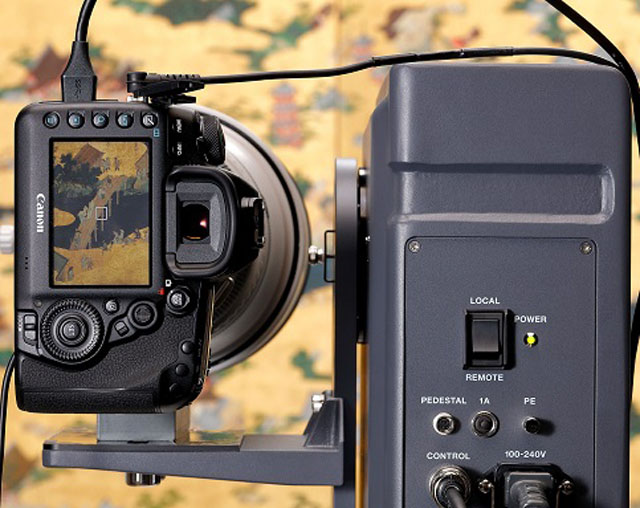 |
Capturing high-resolution digital dataA digital SLR camera is used to capture high-image-quality data for output in the actual size and dimensions of the original cultural artifact. The camera is mounted on a specially designed turntable, enabling it to capture segmented portions of the original work, which are then digitally stitched into a single high-resolution image file. |
Color matching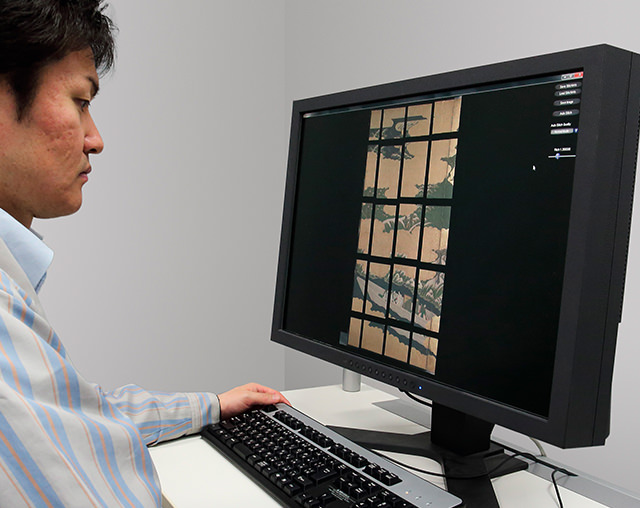 |
Highly accurate color matching systemThe high-resolution data is digitally processed using Canon's proprietary color matching system, which corrects for inherent differences in the lighting environment where the work was photographed. The image is printed and colors are matched on location, helping to minimize both technicians' workload and the wear on the original cultural artifact. |
Output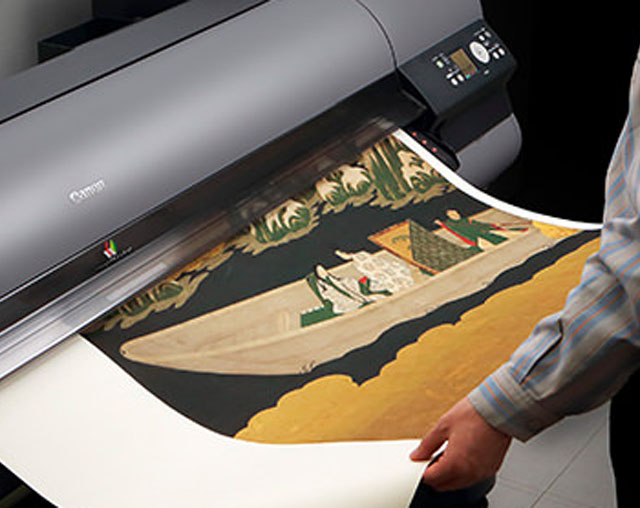 |
World's highest level of printing technologyJapanese art expresses a dimensional depth through its delicate tonal subtleties and shading. These are recreated using Canon's imagePROGRAF large-format inkjet printer, which outputs the data onto washi or silk paper that we have specially designed to be ideally suited for printing facsimiles of the cultural artifacts and applying such finishes as gold leaf. |
Gold leaf, gold paint & isinglass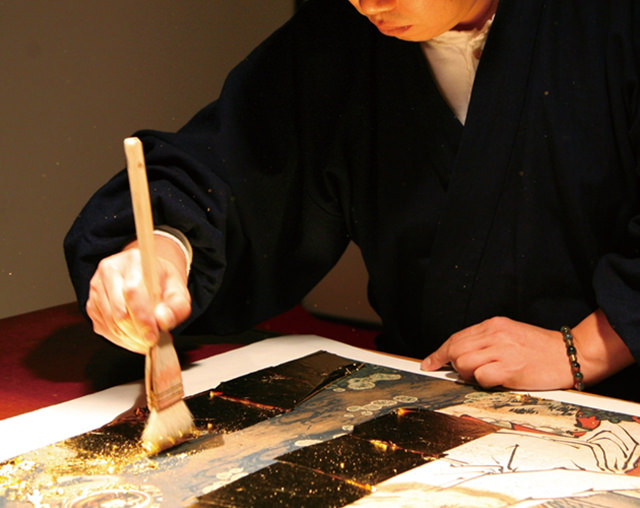 |
Reproduced through time-honored and traditional techniquesAuthentic Kyoto Nishijin craftsmen reproduce the most significant features used in Japanese cultural artifacts—gold leaf, gold paint and isinglass. Special "color fading" techniques recreate the effects that time has had on the gold leaf. |
Mounting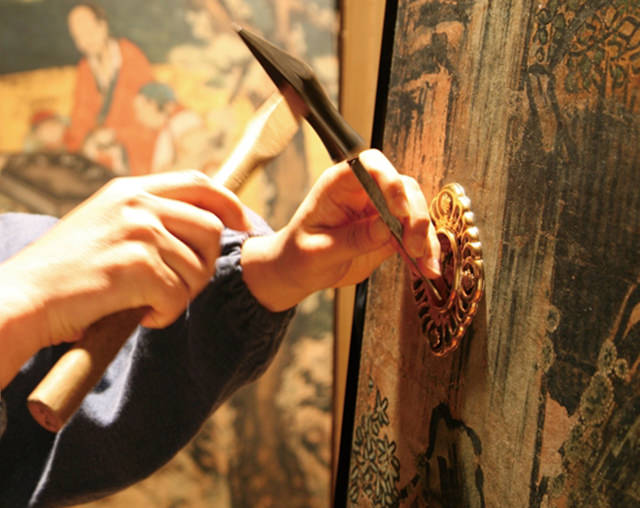 |
A discipline developed in KyotoA master Kyoto framer carefully mounts the output and finished facsimile using traditional Japanese tools. Great care is taken to recreate fading in the metalwork and fabric used in folding screens, while sliding door panels are installed exactly as they were in their original locations. |
